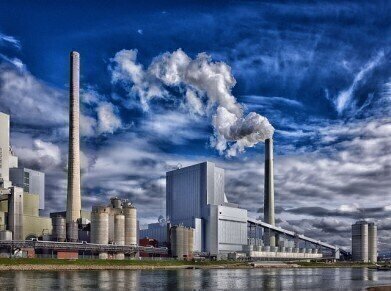Fuel for Thought
What Are the Three Stages of Oil Refining?
Sep 03 2019
From powering vehicles and heating buildings, to paving roads and manufacturing petrochemicals, crude oil is used in a myriad of contexts. But before the resource can be sold as a finished product, it needs to undergo three major stages of refining: separation, conversion and treating.
Stage 1: Separation
The first stage of refining sees molecules separated according to weight using a process known as atmospheric distillation. It starts with the oil being heated at temperatures of up to 400°C in a 60-metre deep distillation column. This causes the oil to vaporise and ascend to the top of the column. Meanwhile, the heaviest molecules, also known as residuals, remain at the bottom of the column. This includes highly viscous materials such as asphalt.
As the oil vapours rise the molecules condense into liquids, with only the lightest gases reaching the top of the column where the temperature is a cooler 150°C. Trays are inserted at different heights along the column and collect liquids, also known as petroleum cuts. After atmospheric distillation is completed, heavy residuals are transferred to other columns where they undergo a second distillation process to extract resources such as diesel and heavy fuel oil.
Stage 2: Conversion
After the separation process, oil then undergoes conversion to remove heavy hydrocarbon molecules and create lighter products. To do this, the heavy molecules are heated to temperatures of 500°C and 'cracked' into lighter molecules, with a catalyst used to accelerate the chemical reaction. Roughly 75% of the heavy products are converted into gas, gasoline and diesel. Often, the total yield is increased by adding hydrogen to the process. Costs increase with more complex operations, which means the refining industry is continually looking for ways to maximise yield and minimise expenses.
Stage 3: Treating
During the treating stage, oil undergoes processes designed to remove corrosive or polluting molecules, including sulphur. A caustic soda wash is used to 'sweeten' kerosene, butane and propane and remove thiols. Automotive fuels are treated with a catalyst to convert naphthenic hydrocarbons into aromatic hydrocarbons and increase octane rating.
After undergoing the three stages of refining, crude oil is ready to be resold as refined petroleum products, including LPG, gasoline, naphtha and lubricants. For a closer look at how natural resources are transformed into global commodities, don't miss 2D-LC Solutions for Petrochemical Applications, which spotlights the use of two-dimensional liquid chromatography.
Digital Edition
PIN 25.1 Feb/March
March 2024
In This Edition Safety - The technology behind the ION Science Tiger XT - Safety with ammonia and LOHCs as hydrogen carriers Analytical Instrumentation - Discussion on new tribology te...
View all digital editions
Events
Apr 28 2024 Montreal, Quebec, Canada
Apr 30 2024 Birmingham, UK
May 03 2024 Seoul, South Korea
May 05 2024 Seville, Spain
May 06 2024 Riyadh, Saudi Arabia


















